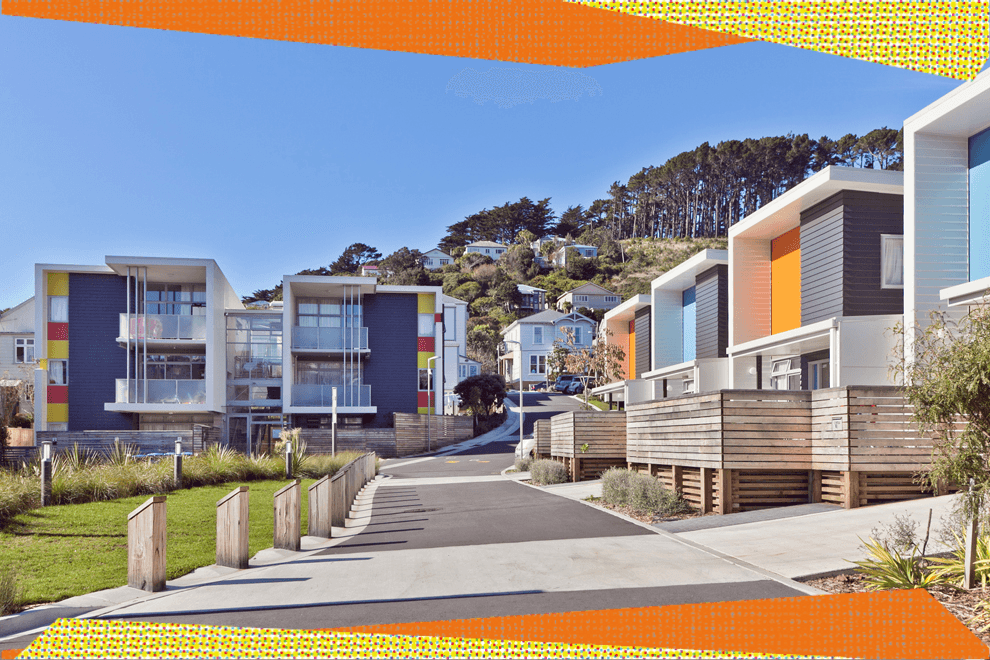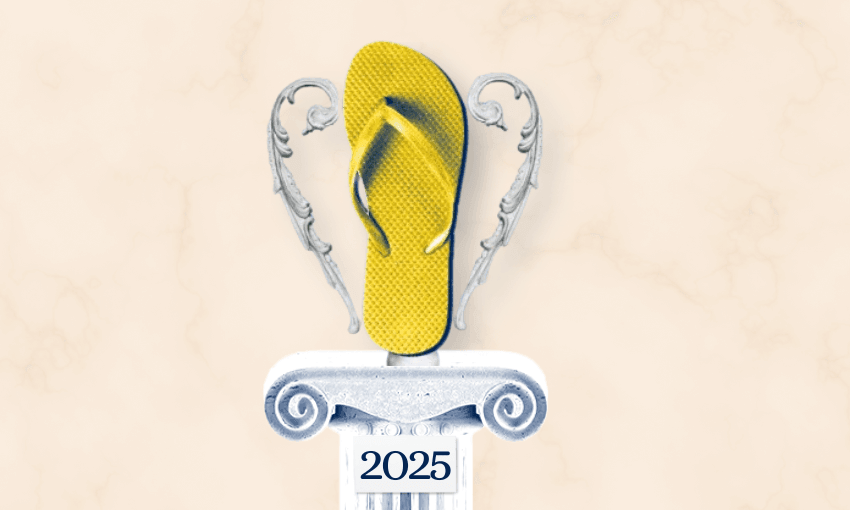The independent panel in charge of Wellington’s District Plan has released its first list of recommendations. It’s full of bizarre and regressive decisions that allow a lot less housing in Wellington. Joel MacManus breaks down the worst parts.
The trumpet has blown to mark the first battle of the War for Wellington, and there is one decisive loser: housing. The independent hearings panel, a group of eight planners and architects appointed by the council, released their first set of recommendations that will form the basis of the new District Plan.
The big takeaway from this report: the panel appears to be doing everything within its power to reduce the amount of new housing in the District Plan. To be clear, the plan still has quite significant upzoning, but only because a new law, the NPS-UD, forces councils to implement higher density in some places. That is just a minimum level; if Wellington City Council wanted to be more ambitious, it could. The panel did not seize that opportunity. In fact, most common houseplants possess more ambition than its report.
In its 170–page decision, focused on areas around the centre city and train stations, the panel decided it did not want to allow any more housing than is absolutely legally necessary. That’s not just my analysis, the report says this explicitly: “The evidence we heard… did not suggest a clear need for greater intensification than is clearly directed by the NPS-UD, and did show downside risks if a much greater level of intensification is provided for than currently.”
Some of the panel’s decisions are regressive, others are just outright bizarre. Here’s a whistle-stop tour through three of the strangest findings:
Building more houses doesn’t make houses more affordable
To start, the panel considered two very tricky questions: would making it easier to build more houses lead to more houses being built? And would an increase in housing supply help improve housing affordability?
It might seem like a simple question for anyone who learned about supply and demand in NCEA level one economics, or even a toddler who has grasped the basic concepts of cause and effect. Not so much for the Independent Hearings Panel: “We agree that enabling intensification does not, of itself, improve or even address affordability.”
This would be news to the authors of dozens of studies worldwide showing that enabling intensification and providing for growth does in fact improve and address affordability.
“We certainly accept there is a significant problem with housing availability and cost, especially for young people looking for their first home,” the panel wrote, showing a caring, sympathetic side. However, “the evidence we heard did not lead us to conclude that the proposed District Plan can solve that problem by providing for more growth than the NPS-UD requires.”
After upending centuries of economic theory with their radical conclusion that increasing supply won’t affect price, the panel stumbled on to an even wilder conclusion: allowing more housing wouldn’t lead to more housing. “It was by no means clear to us that existing constraints on development in the [current District Plan] are the cause of those problems, or that a much greater level of development… is the solution.”
Wellington has one of the lowest rates of building and consenting in the country, while areas with more permissive zoning such as Auckland and Christchurch have some of the highest. But admittedly, it’s possible these differences are down to another cause, such as a witch’s curse. As the panel says, the situation is unclear.
Generation Zero pointed out upzoning in Auckland had led to a doubling of consented new builds and a reduction in the real cost of rentals. The panel dismissed this outright, and criticised the group for providing “no details or analysis that might have demonstrated either that there was a causal relationship between these changes, or that the same result would likely follow in Wellington”.
As far as I can tell, this is not just a bad take, it’s also factually wrong. Several submitters presented extensive evidence showing that Auckland’s upzoning had led to a growth in housing. Like this paper, which found “strong evidence” that upzoning stimulated construction. Or this one, which found areas that were upzoned built three times more new houses than areas that weren’t. Here’s one showing Auckland’s upzoning led to a 14-35% reduction in rents compared to other cities. This analysis from the Ministry for the Environment estimated an additional 28,100 dwellings in Wellington would lead to the median home prices being $175,000 lower by 2043 than otherwise forecast.
All these papers show clear evidence that upzoning causes more houses to be built and reduces prices. They were all presented to the panel and, apparently, ignored.
The Johnsonville train is not a train
One of the biggest battlefields in the War for Wellington is around the Johnsonville rail line, a 10km route between Wellington city centre and the northern suburbs of Johnsonville, Ngaio and Khandallah.
The areas around train stations are some of the best places to build apartments, because people don’t need cars in order to get to work in the city; they can just walk down to their stop. That’s why the NPS-UD required councils to upzone to six storeys within walking distance of any “mass rapid transit station”.
The question was: what is “mass rapid transit?” Wikipedia helpfully states: “rapid transit systems are railways”. Dictionary.com says mass rapid transit is “a subway or elevated train system”.
That might make it seem like the Johnsonville train line, like any other train, is mass rapid transit and the council should probably allow six-storey apartments near the stations along it.
In fact, the Ministry for the Environment’s own guide, written to help councils implement NPS-UD, explicitly states: “Examples of existing rapid transit stops include train stations on the commuter rail services in Wellington.”
But don’t worry: the independent hearings panel managed to wriggle its way out. The panel “put little weight on the MfE guidance document”. In a piece of Suits-level legal analysis, it discovered: “It does not say all rail stops qualify.” There’s also no rule saying a dog can’t play basketball.
The panel concluded the train was not “mass”, because its seated capacity of 1,176 people per hour is quite low (and, of course, it is impossible to stand up on a train or add more carriages if it gets busy). The train wasn’t “rapid” because it only stopped every 15 minutes during peak time (by comparison, the Hutt and Kāpiti lines, which are considered mass rapid transit, stop every 20 minutes). It only barely found the train to be “transit”.
Defining the Johnsonville train as mass rapid transit, a term that literally means train, was “dubious at best”. There was, the panel decreed, “no marked advantage to taking the train compared to private cars”.
The impact of this declaration on housing capacity is significant. Unless the council overturns the decision, the area around seven train stations on the line through Crofton Downs, Ngaio, Khandallah and Broadmeadows will not upzoned.
Walking is an impossible mystery
One of the most important decisions of the entire District Plan is the central city walking catchment. Anywhere close enough to town for people to walk to work should be zoned to allow six-storey apartments. But “walkable” is a very subjective term, and once again the panel was determined to allow as little new housing as possible.
Kāinga Ora argued it should be a 20-minute walk. The Ministry of Housing and Urban Development wanted a minimum of 15 minutes, ideally more. Waka Kotahi pushed for the walking catchment to be a minimum 1.5km from the edge of the centre city zone.
During the hearings, Waka Kotahi provided census data showing that vast numbers of Wellingtonians walk to work, even from suburbs as far as Newtown (which is not that far). The panel rejected that census data with a truly spellbinding feat of argumentative trickery: the census had only asked how people get to work. It didn’t ask how they got home.
“We can readily believe that people might walk a reasonable distance to work, because that is generally downhill. That did not tell us, however, how they get home (back up the hill from which they have come). We do not consider that an area can be considered within a walkable catchment if people have to rely on other modes of transport to travel in one direction.”
I typically walk to work, then pop in to Gazley Motors to grab a new Ford Ranger for my commute home. On Fridays, when my driveway is too full from the previous days’ Rangers, I hire an e-scooter or take a bus.
Having decided that the census data wasn’t good enough, the panel then seemingly just picked a number based on vibes. It opted for a 15-minute walking catchment, and shorter in some hilly sections. The decision excluded Newtown, which was previously classed as walkable. This means the northern end of the suburb around the hospital will not be zoned for six-storey apartments.
What this means for the War for Wellington
None of this is good news if you were hoping for Wellington to allow as many new homes as possible. The panel has shown, in their own words, that they don’t believe they should go above the bare minimum required by law. In almost every case, they sided with submitters who wanted less housing and against those who wanted more.
The recommendations of the panel are not final. Wellington city councillors still have the chance to make changes to the District Plan in the meeting on March 14, as long as they can get a majority vote for their amendments. However, any amendments that differ from the panel’s recommendations need to be signed off by the minister for the environment.
This is just the first of six reports from the independent hearings panel. The next report will include the panel’s recommendations for character areas – inner suburbs where new developments are highly restricted. Housing advocates were hoping to see those areas reduced, but based on what we’ve seen so far, it’s looking unlikely.
How to follow along
If you want to stay on top of everything that happens throughout this process, subscribe to The Spinoff’s War for Wellington newsletter. Every week, we’ll send a roundup of the most important stories about the District Plan process and the future of housing in Wellington. It will include highlights from our own coverage, perspectives from experts and activists, and the best reporting from other media around Wellington. Sign up here.



